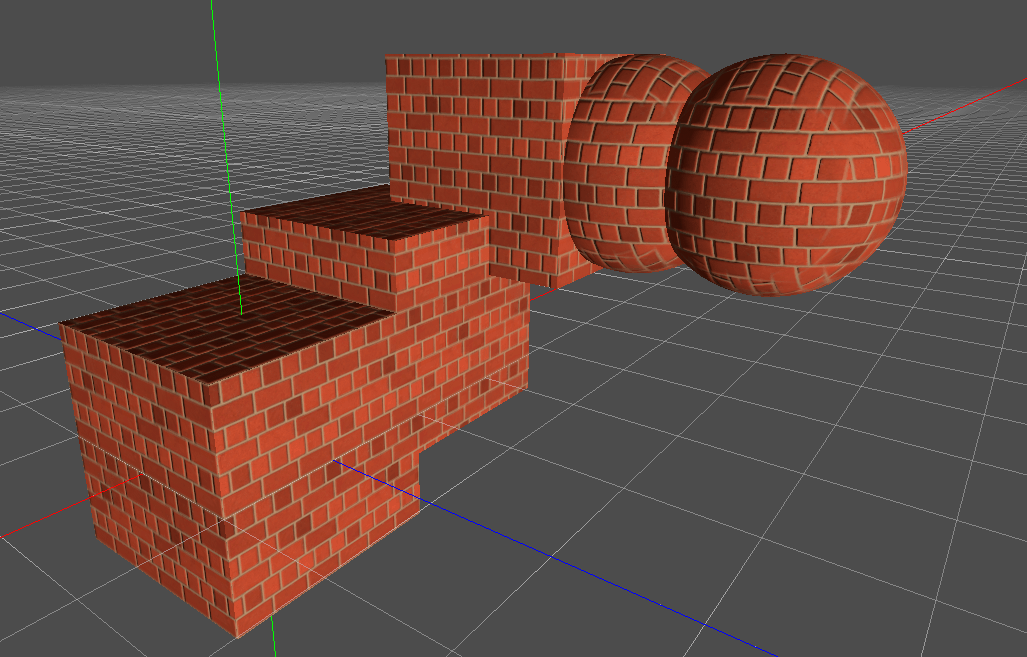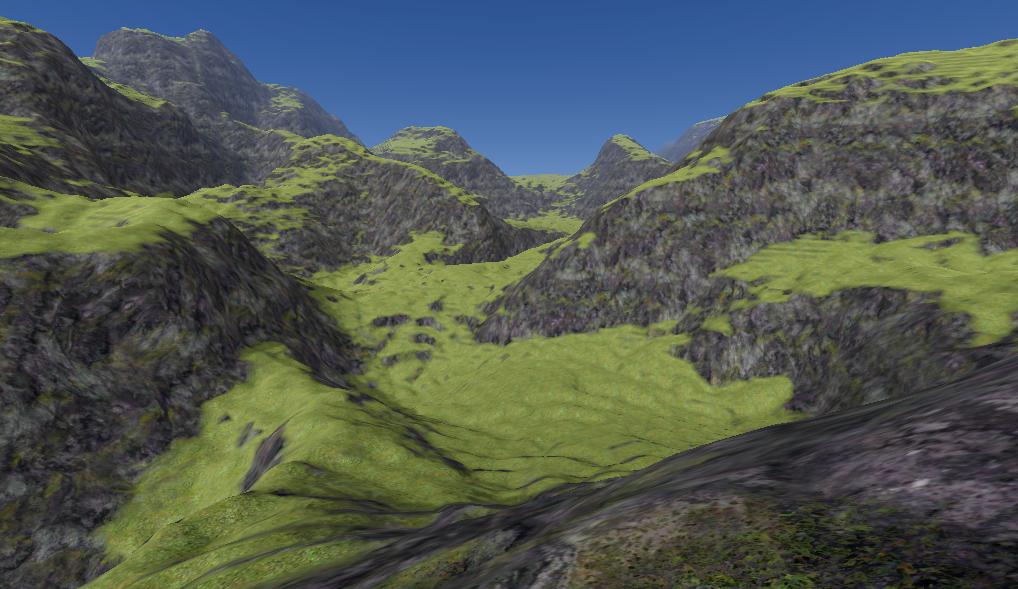7.0 KiB
Smooth terrains
It is possible to work with smooth-looking terrains, using signed distance fields and VoxelMesherTransvoxel.
Signed distance fields
TODO
Transvoxel
TODO More information about Transvoxel
Smooth stitches in vertex shader
Transvoxel uses special meshes to stitch blocks of different level of detail. However the seams may still be visible as occasional sharp little steps. To smooth this out a bit, meshes produced by VoxelMesherTransvoxel contain extra information in their COLOR attribute, telling how to move vertices to smooth those steps.
Create and setup a ShaderMaterial on your terrain, and integrate this snippet to it:
// This is recognized and assigned automatically by the voxel engine
uniform int u_transition_mask;
vec3 get_transvoxel_position(vec3 vertex_pos, vec4 vertex_col) {
int border_mask = int(vertex_col.a);
int cell_border_mask = border_mask & 63; // Which sides the cell is touching
int vertex_border_mask = (border_mask >> 6) & 63; // Which sides the vertex is touching
// If the vertex is near a side where there is a low-resolution neighbor,
// move it to secondary position
int m = u_transition_mask & (cell_border_mask & 63);
float t = float(m != 0);
// If the vertex lies on one or more sides, and at least one side has no low-resolution neighbor,
// don't move the vertex.
t *= float((vertex_border_mask & ~u_transition_mask) == 0);
// Position to use when border mask matches
vec3 secondary_position = vertex_col.rgb;
return mix(vertex_pos, secondary_position, t);
}
void vertex() {
VERTEX = get_transvoxel_position(VERTEX, COLOR);
//...
}
Research issue which led to this code: Issue #2
Low-poly / hard-edged look
Use this in your fragment shader:
NORMAL = normalize(cross(dFdx(VERTEX), dFdy(VERTEX)));
Texturing
At the moment smooth meshers don't provide UVs and texturing information, so this has to be done entirely using shaders. In the future it may be possible to convey information from generators or edited voxels to vertex attributes.
Triplanar mapping
Applying a texture to a voxel terrain can be quite complicated if classic UV-mapping is used, because of the arbitrary shapes it can contain. So instead, we can use triplanar mapping.
The method involves projecting the texture on to the part of object that directly faces the X-axis. Then projecting it on the sides that directly face the Y-axis. Then again for the Z-axis. The edges of these projections are then blended together with a specified sharpness.
Look at how the brick textures are blended together on the top right sphere.
Read about triplanar mapping in Godot.
It is also possible to choose a different texture for the 3 axes.
Here's a shader that supports two materials, such as grass on the top and rock on the sides, each with triplanar mapped albedo, normal and AO maps, then blended together based on if their normal faces the upward direction or the sides.
You can find a working example in the fps demo, or see the shader itself.
In the shader parameters, add your two albedo maps, and optionally normal, and AO maps. Then play with the AB Mix 1 and AB Mix 2 sliders to adjust how the top and sides blend together. The other settings should be self explanatory. The screenshot below also has a little bit of fog and far DOF added.
Recommended Reading
- SpatialMaterial - demonstrates many of the shader options available in Godot.
- Shading Index - tutorials and the shader language API
- Shader API Reference - some of the most frequently accessed references
Level of detail (LOD)
VoxelLodTerrain implements dynamic level of detail for smooth terrain.
Description
TODO
LOD fading (experimental)
LOD changes can introduce some mild "popping" in the landscape, which might be a bit disturbing. One way to attenuate this problem is to fade meshes when they switch from two different levels of details. When a "parent" mesh subdivides into higher-resolution "child" meshes, they can be both rendered at the same time for a brief period of time, while the parent fades out and the children fade in, and vice-versa.
This trick requires you to use a ShaderMaterial on VoxelLodTerrain, as the rendering part needs an extra bit of code inside the fragment shader.
VoxelLodTerrain has a property lod_fade_duration, expressed in seconds. By default it is 0, which makes it inactive. Setting it to a small value like 0.25 will enable it.
In your shader, add the following uniform:
// This is recognized and assigned automatically by the voxel node
uniform vec2 u_lod_fade;
Add also this function (unless you have it already):
float get_hash(vec2 c) {
return fract(sin(dot(c.xy, vec2(12.9898,78.233))) * 43758.5453);
}
And at the end of fragment(), add this:
// Discard pixels progressively.
// It has to be last to workaround https://github.com/godotengine/godot/issues/34966
float h = get_hash(SCREEN_UV);
if (u_lod_fade.y > 0.5) {
// Fade in
if (u_lod_fade.x < h) {
discard;
}
} else {
// Fade out
if (u_lod_fade.x > h) {
discard;
}
}
Note: this is an example of implementation. There might be more optimized ways to do it.
This will discard such that pixels of the two meshes will be complementary without overlap. discard is used so the mesh can remain rendered in the same pass (usually the opaque pass).
!!! warn
This technique is still imperfect because of several limitations:
- Transition meshes used to stitch blocks of different LOD are currently not faded. Doing so requires much more work, and in fact, the way these meshes are handled in the first place could be simplified if Godot allowed more fine-grained access to ArrayMesh, like switching to another index buffer without re-uploading the entire mesh.
- Shadow maps still create self-shadowing. While both meshes are rendered to cross-fade, one of them will eventually project shadows on the other. This creates a lot of noisy patches. Turning off shadows from one of them does not fix the other, and turning shadows off completely will make shadows pop. I haven't found a solution yet. See https://github.com/godotengine/godot-proposals/issues/692#issuecomment-782331429

